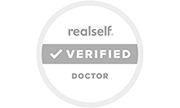Low-Level Laser Therapy (LLLT) for Hair Restoration
Low-Level Laser Therapy (LLLT) is a groundbreaking development in the field of hair restoration, offering a glimmer of hope for individuals experiencing hair loss. At Charles Medical Group, this non-invasive treatment has become a cornerstone of our comprehensive approach to combating hair thinning and baldness. But how exactly does LLLT work, and what makes it such a sought-after option for those seeking to enhance their hair growth without undergoing surgery?
The Science Behind LLLT Hair Therapy
LLLT leverages the power of low-level lasers to penetrate the scalp, delivering light energy directly to hair follicles. This process, called photobiomodulation, stimulates cellular activity and promotes blood circulation, which is vital for nourishing hair follicles and encouraging growth. The light from LLLT is absorbed by the cells and converted into the energy that fuels hair growth cycles and helps to revive dormant follicles.
Benefits of Low-Level Laser Therapy
One of the most appealing aspects of LLLT is its convenience and non-invasive nature. The therapy involves sessions that are short and painless, requiring no downtime, which means patients can resume their daily activities immediately after treatment. This makes LLLT an attractive option for those with busy lifestyles or those wary of surgical procedures.
Additionally, LLLT is known for its lack of side effects, a stark contrast to some medical hair loss treatments that can cause unwanted symptoms. For those looking for a discreet hair loss solution, LLLT is particularly beneficial as it doesn’t require any recovery period, and there are no visible signs of treatment.
Candidacy for LLLT and Expected Outcomes
While LLLT is a promising solution for many, it’s important to establish candidacy through a thorough consultation with a hair restoration expert like Dr. Glenn Charles. Ideal candidates for LLLT are typically in the earlier stages of hair loss, as the therapy is most effective when hair follicles are not completely dormant.
Patients can expect to see a gradual improvement in hair density and strength over several months, with the most significant results visible after consistent treatment as recommended by their hair restoration specialist. It’s essential to have realistic expectations and understand that LLLT is a commitment to ongoing hair health rather than a one-time cure.
Integrating LLLT with Other Hair Restoration Treatments
At Charles Medical Group, we understand that hair loss is a multifaceted issue that often requires a combination of treatments. LLLT can be a powerful adjunct to other therapies, such as medication, platelet-rich plasma (PRP) therapy, or even surgical hair transplants. Dr. Glenn Charles often recommends LLLT as part of a comprehensive treatment plan tailored to the individual needs and goals of each patient.
Maintenance Post-Therapy and Long-Term Care
To maintain the benefits of LLLT, patients may need to continue with periodic treatments. Adherence to a prescribed treatment schedule is crucial for achieving and sustaining optimal results. Additionally, patients are encouraged to follow a hair care routine that supports hair health, including proper nutrition, gentle hair care practices, and avoiding harsh chemicals or styling techniques that may damage hair.
In conclusion, LLLT stands out as a modern, non-surgical approach to hair regrowth, characterized by its ease of use and effectiveness. At Charles Medical Group, we are proud to offer LLLT as part of our mission to provide cutting-edge, personalized hair restoration solutions. Whether used alone or in conjunction with other treatments, LLLT is a key player in our arsenal against hair loss, helping patients regain not only their hair but also their confidence.




